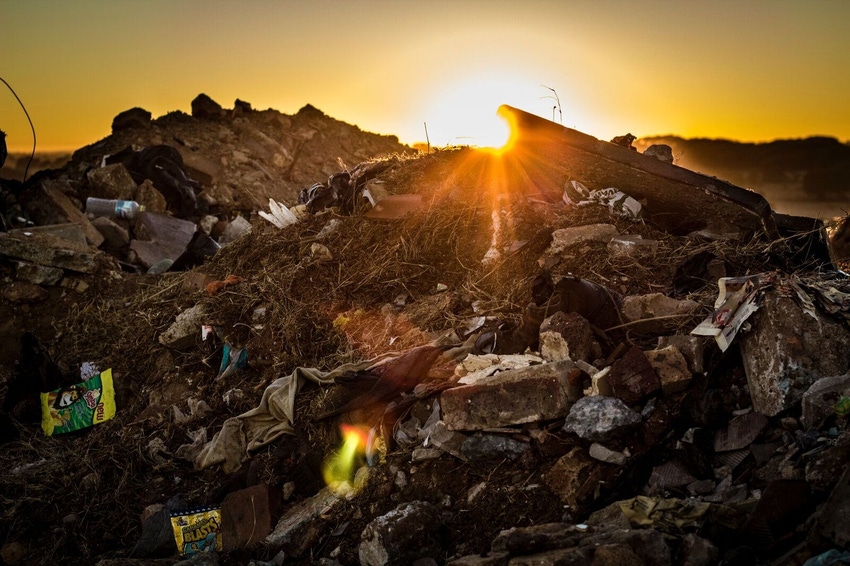With a majority of Chicago’s 2.7 million residents waste going to just four landfills, the city needs to take every precaution it can to minimize trash. One-fifth of the city's trash is comprised of food waste; a number reflective of many urban areas in the United States. A huge bite to chew, the amount of edible waste produced in the urban world is about to meet it’s match with a non-profit organization called Bigger Table.

With a majority of Chicago’s 2.7 million residents waste going to just four landfills, the city needs to take every precaution it can to minimize trash. One-fifth of the city's trash is comprised of food waste; a number reflective of many urban areas in the United States.
A huge bite to chew, the amount of edible waste produced in the urban world is about to meet it’s match with a non-profit organization called Bigger Table. This group, which launched in 2020, is designed to work with food banks in the Chicagoland area by utilizing a network of food providers to craft nutritious meals and feed those who are hungry.
The cooperative is actually an offshoot project from another organization called Chicagoland Food and Beverage Network which is a collaboration between a variety of food and beverage suppliers and professionals in the city and surrounding area.
“What we found was that there are lots of folks in the food and beverage industry in the greater Chicagoland area and while they were interested in networking and building their businesses, which is what we do with Chicago and Food beverage network, they're also interested in giving back to the community” says Executive Director of Bigger Table, Alan Reed.
Taking an innovative approach to eliminating hunger and food waste at the same time, Bigger Table is using a system that meets food waste at perhaps it’s source; ingredient companies.
While edible food waste from food providers like restaurants can be gathered and given to food banks, it is difficult for companies who generate basic ingredients to do the same.
Reed thinks back to the initiative in it’s beginning stages as just a conversation amongst the Chicagoland Food and Beverage Network: “So we said, ‘well, wait, what if we put together our ingredient company members and found out whether they had things to donate—whether they had food waste to address?’ Then once we knew what we were working with we'd say, ‘well, can we put all of these pieces together and make something that will help to feed people?”
The organization works like a fully functioning ready-to-serve food manufacturer, partnering different ingredient companies, packaging companies, and food banks to complete meals that are not only nutritious but hit the specific spots in diet that food pantries are in need of despite their current set of donations.
Bigger Table prides itself in taking what they can get and providing people with what they need. “We're always developing products with an eye towards delivering on the nutritional goals of the food banks and pantries that we have here locally,” the director emphasizes.
One specific product mentioned as a great example of this were the three hundred thousand servings of high-protein hot chocolate that Bigger Table formulated using otherwise unused soy protein isolate and unsweetened cocoa powder that, without being given this second chance, would likely wind up in one of Chicago’s four providing landfills. The process of creating these meals requires a lot of creativity and planning. “We've had to get very agile in terms of what's available, where there is surplus, and how can we help prevent food waste,” shares Reed.
While the food is often on the track to becoming waste, Reed is sure to make it known that this is not bad food. The extra ingredients are typically just nearing the end of their shelf life and deemed “less sellable”, not spoiled.
“Obviously we have to have ingredients that are available and and aren't already spoken for, right? So the idea here is we're trying to very proactively identify where they may have a surplus of ingredients that are likely to become food waste.”
The unique course of gathering ingredients set to be sent to landfills, rather than already constructed food products, is a model Reed has a lot of faith in as a solution to several ethical complications including employment, hunger, and food waste.
The company as a whole has put time and energy into researching the idea of this model in other cities across the United States or even the world. “Well, we've done quite a bit of work to understand this” says Reed.
One of the highlights of this model is it’s short supply chain that, when kept locally, is also extremely cost efficient. Utilizing the generosity of these ingredient and food suppliers, the model of Bigger Table only meets the challenge of costs when beginning to accept ingredients from outside of the immediate Chicagoland area due to the price of shipping.
With an extremely successful two and a half years of work, the Chicago based non-profit has become a heavily ingrained piece of the hunger-solving and food waste problems in the area. Donating just under a million meals by the end of August, 2022, Bigger Table’s approach could be the perfect code to defeat hunger and food waste in the forward moving world and Reed urges others to apply this tactic in their own cities to solve these ever-evolving hardships.
“It is likely anyone can do this. There are some economic factors behind it, but there's no reason it couldn't be done just about anywhere.”
About the Author(s)
You May Also Like




